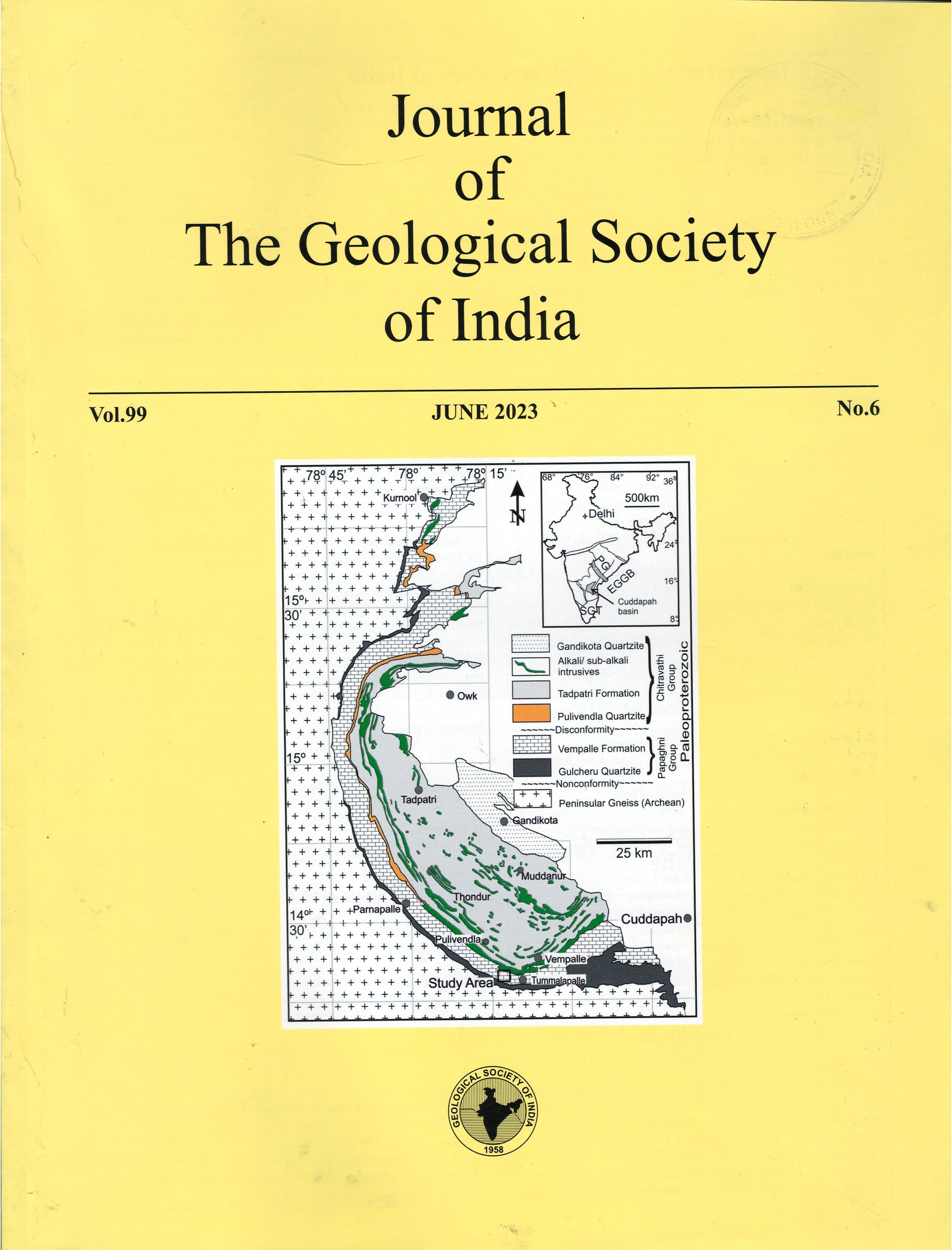Sedimentary Thickness and Upper Crustal Structure of the North Cambay Rift, India Deduced from Gravity Data: New Evidence of Pre-Trappean Sediments
DOI:
https://doi.org/10.1007/s12594-023-2384-zKeywords:
No Keywords.Abstract
A gravity survey was carried out to estimate the sedimentary thickness and to map upper crustal geometry over the northern part of the Cambay rift. Structural lineaments delineated using the total horizontal gradient of the Bouguer anomaly indicate a major lineament trend in the NW-SE direction. Results of the density modelling using residual Bouguer anomaly reveal the average thickness of the Quaternary and Tertiary sediments to be between 0.5 and 6 km, while the Deccan trap thickness varies between 0.5 and 3 km. It is seen that the Mesozoic sediment (maximum thickness ~0.6 km) is sandwiched between the Deccan trap and granitic basement, which indicates the possible existence of a rift in the late Jurassic-early Cretaceous. Based on the residual Bouguer and density modelling results, the spatial locations of the NE-SW trending Unhawa ridge and the N-S trending Mehsana uplift are provided, which are believed to be the remnant rock of the Proterozoic age. A high-density body, interpreted as a magmatic underplating layer, is also found in the lower part of the middle crust along the central part of the rift, which continues in the lower crust. The magmatic underplating layer is formed during the Reunion hotspot and lithospheric interaction in the Cretaceous period.

 Avinash Kumar Chouhan
Avinash Kumar Chouhan






